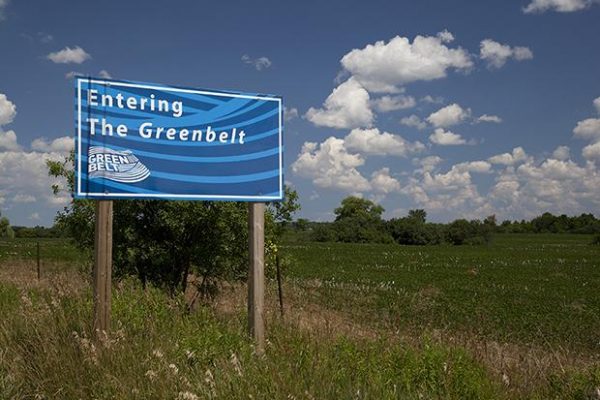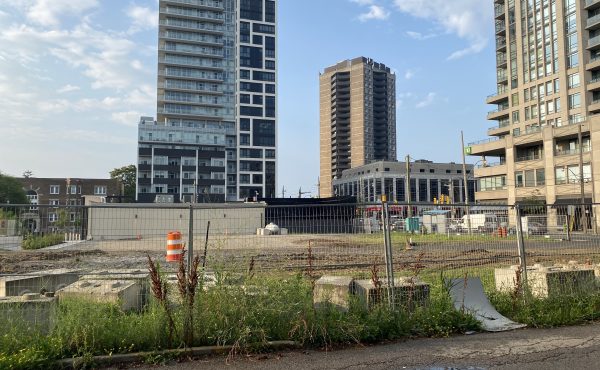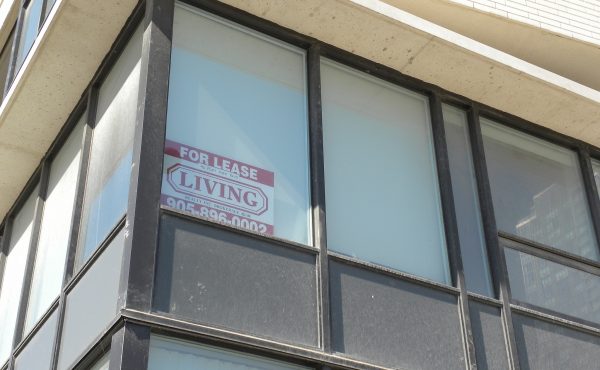At this stage of the game, it would be foolish to depict Raymond Cho’s by-election victory for the Tories last week as a harbinger of anything in particular. Cho went into the race with enormous name recognition. As has happened in many such races, he was able to leverage the sort of mid-term obstreperousness that by-elections crystallize, even if they don’t necessarily lead to general election victories.
The weird little communications fiasco over the Tories’ sex education policy could be seen as evidence that the Tory brain trust is muddled-headed or two-faced. Or it could be interpreted as a sign that Cho and Patrick Brown had enough sang froid to survive an 11th-hour screw-up. Even Doug Ford’s role (as campaign manager) is a bit ambiguous, and hardly a sure sign that the former councilor for Ward 2 is plotting some kind of electoral come-back.
With all those caveats, however, the brainiacs in charge of the Liberals’ 13-year-long hegemony surely understand that Cho’s win — the first Tory seat in the 416 in a long time — was a crisp shot across their bow. And the rest of us would be wise to begin contemplating what regime change may look like, from a policy perspective as well as a political one. (Correction: Former Toronto councillor Doug Holyday won a seat for the Tories in Etobicoke in 2013.)
My guess is that two of the Liberals’ landmark policy accomplishments – Metrolinx and the Greenbelt/Places to Grow land-use planning regimes for the GTHA – will both become the subject of extensive overhauls at the hands of a Tory government. Both date back to the Dalton McGuinty’s first term in office. Both are well-intentioned but flawed in non-trivial ways. And neither has endured regime change, which, to my mind, is the acid test of sustainable public policy.
Ten years since its creation, Metrolinx remains deeply connected to the Liberal regime, especially at the board level. While the agency has done much good and important work, its governance is hardly independent, and its plans are constantly subject to political interference from the cabinet. Important policy recommendations, e.g., on revenue tools, have been summarily quashed, and the relationship between Metrolinx and the TTC remains opaque and competitive.
I wouldn’t be surprised in the least to see a new Tory government push substantive changes, in terms of governance structure, resource allocation, and the choice of transit technologies, especially if it wants to regain the 905.
But I’d say the Greenbelt/Places to Grow acts provide the most obvious source of political manna for the Tories. When the Liberals enacted these laws, they were widely praised internationally, and showed how the combination of land use planning, infrastructure investment and environmental protection could contain sprawl and mitigate the destruction of valuable natural and agricultural ecosystems.
While critics said the Greenbelt boundaries were too loose to substantively slow the outward march of low-density subdivisions, there’s little doubt that the twinned laws — and the regulatory constraints they placed on municipal land use planning within the GTHA — have played an enormous role in the unprecedented high rise development boom that dramatically re-shaped the core and some other higher density nodes around the GTA. But it’s clear these policies have also contributed to the skyrocketing residential real estate prices, rendering the purchase of a single family house or town house all but impossible for many people who, in another era, would have been able to afford such an investment.
Similarly, the proliferation of gigantic and grindingly impersonal high-rises with tiny apartments clearly doesn’t constitute an effective and sustainable alternative to the single-family home. Yes, these buildings in the short term are very efficient from a land use perspective. But everyone understands that many are little more than short-term investment vehicles targeting first-time buyers looking to generate equity and then get out.
What the Liberals don’t really seem to understand is how this monochromatic form of development, plus demographic shifts, could combine to create either a genuinely problematic exodus from the region or a ripe political opportunity for Patrick Brown.
Within a few years, the millennial generation will begin producing children in large numbers, and that looming baby boom will necessarily leave its mark on the city-region, as was the case with the original baby boomers (the post-war suburban exodus) and Generation X (the post-1990s gentrifiers).
There’s absolutely no dispute that unchecked sprawl is the wrong way to build cities: this kind of development creates all sorts of negative side effects for the environment, public finances, regional productivity and personal well-being.
That said, when land use policies and the brutal economics of the property market conspire to effectively force young families and those working in middle-income jobs to leave the region in search of affordable homes, that’s also a grave problem with all sorts of corrosive consequences.
Ryerson’s City Building Institute and the Ontario Home Builders’ Association this week released a report looking at how to intensify along all the new suburban transit lines that Metrolinx is planning for the region. As the authors correctly note, there’s been a conspicuous dearth of mid-range housing – mid-rise, stacked townhouses and townhouses – in the region’s development offerings. (Many existing GO and subway stations also serve communities with not nearly enough density to justify higher-order transit, the report notes.) Such housing, particularly when situated near transit and services, represents a potential solution to the dilemma facing both families with children and older people interested in living near amenities.
As Metrolinx’s own planners have been advocating for several years, Ryerson’s report urges the province and local municipalities to develop more targeted and mindful strategies for promoting this form of development near GO stations and along suburban arterials targeted for LRTs or other rapid transit service.
These are great ideas, but planners in Toronto (and, to a lesser extent, the region) have for years been promoting this form of development (i.e., streetcar suburbs, redux), with at best middling results.
Which brings me back to the political opportunity: If I’m thinking about how to beat the Liberals in the GTA, I might be inclined to promise land use planning changes — namely, the dismantling or watering down the Greenbelt Act — that will revive the development of relatively inexpensive single family tract housing. Bad policy, but good politics.
All those family-minded 30-somethings, and the tens of thousands of newcomers arriving to Toronto, represent the region’s future, and they collectively face a horrendous and unrelenting housing affordability crisis that extends from one end of the GTHA to the other.
Anyone who aspires to govern Ontario must confront this issue. The Liberals, in my view, haven’t really woken up to the political implications of an out-of-control real estate market where re-sale prices are jumping by 16% annually. For their opponents, the opportunity is there for the taking. And I’m guessing Brown & Co. are planning to do just that.






7 comments
John,
Two items:
First: the last Tory seat in the 416 was held until prior to the most recent election. It’s been a long time since the Conservatives won a seat in a general election in the 416 (Mike Harris’ first term: a penalty for the Megacity I’ve always thought.) But it hasn’t been that long since they won a by-election (under suspiciously similar circumstances.)
Second: you failed to address how, if the conservatives go after Metrolinx and the Greenbelt they’re going to address traffic. This is an obvious counterpunch that the Liberals will happily use against the conservatives: “Brown’s 3 hour commute policy”.
Will there be any provincial spill-over of the recently-unprecedented youth vote that showed up in the last federal election? And if there is, will they (as tradition dictates) vote for a centre or centre-left option, instead of the PCs? If that’s what the parties foresee, it will be interesting to watch the PCs squirm into an election strategy that makes them appear mostly centrist. The sex ed communication debacle in a by-election is not encouraging for them in that regard.
On the Greenbelt, I suspect the timing won’t be quite right for the PCs, should they make it an election issue. Millennials won’t quite yet be contemplating suburban dream homes and families en masse. (will they ever? Esp. the families bit….) Also, they generally share more concern for the environment than their boomer parents, who are generally ambivalent at best towards the greenbelt and the environment (and/or only when it impacts them directly).
The PCs/Patrick Brown have shown some willingness to embrace traditionally “progressive” platform items (e.g. carbon pricing). So perhaps the greenbelt will be left well enough alone, but transit, and perceived/real lack of progress on that front, becomes the main GTHA election issue.
While the author’s assertion (that a Brown government would substantially tinker with Metrolinx, and water down the Places to Grow and Greenbelt Acts) may be correct, there isn’t a lot in this article that soundly backs that up.
Re: the PtG and Greenbelt Acts, the author asserts that “it’s clear these policies have also contributed to the skyrocketing residential real estate prices”. There is far from an accepted correlation between the policy and house prices, yet the author doesn’t mention this and also doesn’t bother to give the reader any indication if there has been any study done on this subject.
Similarly, the author doesn’t give any back up to the assertion that demographics will lead to a larger-than-average cohort of birthing young couples searching for single-detached homes in the suburbs.
The article also mentions the “missing middle” of housing types (i.e. stacked towns, low-mid rise apartments), which is spot on, but then the author fails to connect this to his argument at hand about the Tories dismantling/weakening the PtG/Greenbelt Acts (that prospective Tory action wouldn’t seem to promote that “missing middle”).
In the end, the pertinent take-away points are:
-there are housing affordability issues that need to be addressed by the next government (regardless of whether they are caused by planning policies);
-the next government may not enact policies that represent “good planning”
-the issue of governance and freedom from political wrangling at Metrolinx will have to be addressed by the next government.
As far as questionable policy goes, a hypothetical Brown government could also copy British Columbia and institute a protectionist foreign buyer tax on real estate. That would also adversely affect house prices by reducing some of the price pressure at the top margin.
PtG and Greenbelt have “render[ed] the purchase of a single family house or town house all but impossible for many people who, in another era, would have been able to afford such an investment”
If that’s true (though Kevin doubts it), that comes close to the policy’s objective. But while some land is left green (or greenish), developer pressure and suburban consumer demand continue, which makes John’s projection plausible.
What all here might agree on, however, is the absence of coherent housing policy, coordinated by sensible land use. Since the federal Liberals and then the provincial Conservatives got out of the housing “business” (as they put it), the market has run wild in areas still open for sprawl. While curbing demand for bad sprawl, it’s time to work on supply of good housing. But both old-line parties are too much in bed with developers and the construction industry, while the NDP is over-influenced by short-sighted construction unions. (And who needs agriculture, anyway?)
So the Greenbelt’s future isn’t certain. For a start, will the Liberals go ahead with the sprawl-rewarding Highway 413?
Interesting speculation. Here’s a few other points.
a) Global warming will change everything. However, apart from eliminating the use of coal in our electricity, the Liberals have done nothing meaningful to address the issue. They are big on meaningless symbols like the Greenbelt, pointless building regulation, costly transportation micromanagement and throwing money at favoured groups, but they are unwilling to seriously deal with the problem. Just look at the latest electricity pricing fiasco. The Tories could easily seize the initiative by crafting a compelling vision and tactics to lead us into the new era.
b) Expanding e-commerce, drone delivery, Uber & autonomous vehicles will radically change transportation patterns over the next few decades. Yet Metrolinx, Toronto Council and the Wynne government seem to barely know these things exist. Its almost certain that many of the new big rapid transit infrastructure projects are white elephants in waiting.
c) Places to Grow’s perverse incentives are very damaging. The defacto objective of PtG seems to be to kill off single family homes and replace them with dystopian towers filled with tiny sky boxes. Not surprisingly, apart from some investors, most buyers reject the concept and instead long for ground floor dwellings with a yard and more than 1 miniature bedroom. Just look at TREB sales – despite last decade’s condo explosion, more than half of buyers continue to choose single detached houses – a share that has barely changed since the 1990s. It should be pretty easy for Brown and co. to develop a compelling narrative and action plan on this problem. Building more family friendly, immigrant friendly, community friendly homes is bound to resonate with many, many voters.
d) The costs and benefits of sprawl (both the classic horizontal kind and the new vertical type) and those of excess urban concentration are ripe to be re-assessed. Take water for example: there are massive economies of scale in producing clean water and massive diseconomies in distributing it. So the traditional argument is to concentrate many people in tight areas and constrain horizontal sprawl makes some sense. Yet it also costs tons of money to pump water uphill (or up a high-rise) or to rip up a city street to support infill projects. With much of downtown Toronto’s water assets aging rapidly, increasing the operating strain on the system by adding hundreds of new structures is also taking its toll. Not to mention the health impact from all the old lead pipes which are being stirred up by the new projects.
Or consider roads. Classic sprawl costing assumes high pollution, congestion, personal and construction costs tied to the highway network and contends that there are relatively few costs associated with urban streets. Yet as electric and (eventually) autonomous vehicle use expands, new car emission standards tighten and ride sharing grows, the calculation changes: in the near future, highways will accommodate more cars, vehicles will pollute far less and hands free driving will make trips more pleasant.
On urban streets however the opposite is occurring. The new priority given to bike lanes and public transit combined with unnaturally low speed limits is making urban driving a daunting and costly experience. Congestion and pedestrian/cyclist accidents are also on the rise. A full accounting of all road and highway costs would almost certainly make distributed development more appealing and the mega-city’s high density less attractive.
Of course the real social costs of hyper-intensification won’t show up for another decade or two, when the singles that now dominate many of Toronto’s wards start to grow old and come to rely upon public social and medical services. While some will partner up and move out, many others will stay put, living alone in increasingly unsuitable high-rises.
What’s really tragic is that so much of this could have been prevented. If today’s Toronto had kept the same average household size as 1971, forty years of population growth could have been accommodated with 260 thousand fewer dwellings.
And just think what that could have done for traffic.
There is no justification for the Greenbelt lands west of the Niagara Escarpment. A University of Waterloo study showed that these are poor grade agricultural lands and that limited farming activity was taking place on only 50% of the lands. Instead this area should be developed as sustainable low level housing communities with affordable freehold high density lots that will allow the next generation of Canadians to build future homes and communities. The western Greenbelt should be a new economic growth corridor with extension of the 407 to the Kitchener, expansion of the 401, and new 406 and 408 highways from Hamilton to Guelph and Kitchener respectively. This area is near to economic zones for employment in the western GTA and Brantford, Waterloo and Guelph. This area has nothing to do with Toronto’s public transit goals of trying to create higher density to justify more urban transit. Margaret Wente’s recent Oct 2016 article on this topic was correct. Toronto based Government planners have made faulty assumptions that have distorted the Toronto area housing market to dangerous pricing levels that are a financial risk to all home buyers, builders and associated financial institutions. A review of the urban planning studies and backgrounds of authors that developed the Greenbelt Plan show very cursory assumptions with no mention of the economic effects of the drastic introduction of the world’s largest greenbelt near an urban center. Reducing the Greenbelt to just the Niagara Escarpment and the Oak Ridges Moraine would still make it the largest Greenbelt near a large city in the world. Ontario deserves a better quality of analysis on this important issue. These assumptions need to be challenged or we will destroy future economic growth prospects for Ontario.